Coolant destruction is 4000 times cleaner than expected
7th February 2010
Emissions from a plant built to destroy one of Britain's biggest environmental hazards have been up to 4000 times cleaner than its designers expected.
Engineers believed they could reduce the levels of radioactivity in effluent from a new liquid metal destruction plant by up to a thousand times at most.
But the �15 million plant built at Dounreay in northern Scotland has reported decontamination levels reached four million during its first full run.
This is 4000 times more than the designers thought possible and means emissions from the plant have been a lot cleaner.
Andy Swan, the engineer in charge of the project, says its success is down to a unique resin developed for Dounreay by scientists in Finland.
"The clean-up factor is well in excess of anything the plant designers envisaged and means the impact on the environment from the destruction of the liquid metal is barely even detectable," he said.
Randall Bargelt, site director at the Nuclear Decommissioning Authority, said: "This sort of performance is why Dounreay is renowned for its decommissioning progress - excellent results, with minimal impact on the environment.
"And now that Dounreay has been granted stabilised funding of up to �150m, we can be confident that we will continue to see this sort of progress."
The liquid metal is a remnant of Britain's quest in the 1950s to generate electricity too cheap to meter from fast breeder nuclear reactors.
Almost 1700 tonnes of sodium and potassium used as reactor coolant has been destroyed already during the decommissioning of Dounreay, Britain's centre of fast reactor research until 1994.
The 57 tonnes remaining inside the Dounreay Fast Reactor are heavily soiled with radioactive caesium from the fuel used in the core.
Its destruction is one of the national priorities of the UK Government's Department of Energy and Climate Change.
The �15m destruction plant lifts the highly-reactive, alkali metal from the reactor system in 200-litre batches.
Each batch is reacted with water in a nitrogen atmosphere to create a hydroxide solution that is neutralised with nitric acid.
The process turns it into 2000 litres of effluent that is about twice the strength of standard household drain cleaner.
But it cannot be discharged to the sea yet, because it still contains high levels of radioactive caesium, so the effluent is cleansed through a special resin fitted inside an "ion exchange".
"We knew from tests carried out on the resin by Prague University that it had the potential to exceed the expectations of the plant's designers," explained Andy Swan.
"Once the chemical hazard has been dealt with, we've been very careful with the operation of the ion exchange to get the maximum performance from the resin and so reduce the environmental impact of the effluent to an absolute minimum. It has been so successful that the level of caesium in the effluent discharged to sea is barely even detectable."
The treatment plant has now completed its first campaign, destroying more than 10 tonnes in the process.
It's now shut down for planned maintenance, including the installation of a new resin column in the ion exchange. The old column, soaked with caesium, was removed safely, packed in a drum and sent to a store at Dounreay for intermediate-level waste.
The destruction plant is scheduled to restart early in February. It is on target to destroy all 57 tonnes by 2013.
Related Businesses
Related Articles
TAE Technologies and UKAEA partner to commercialise fusion tech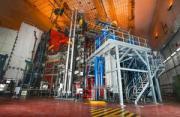
Joint venture to develop neutral beams for fusion and non-fusion applications, creating high-skilled jobs and establishing a critical supply chain. TAE Technologies, a leading US private fusion energy firm with over 25 years at the forefront of scientific innovation, today announces a bilateral and reciprocal investment commitment with the United Kingdom's national fusion laboratory, the UK Atomic Energy Authority (UKAEA) to commercialise TAE's proprietary particle accelerator technology for the global market.
Buried Hazards, Unfinished Business - What the NDA's 2025 Progress Report Really Tells Us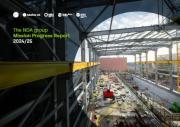
The Nuclear Decommissioning Authority (NDA) has released its 2025 Mission Progress Report is a slightly sprawling document chronicling one of the UK's most complex environmental undertakings. The safe dismantling of its early nuclear legacy.
New recruit officers join the Civil Nuclear Constabulary
The Civil Nuclear Constabulary (CNC) welcomes its newest recruits. The CNC hosted two passing out parades for the graduating Authorised Firearms Officers (AFOs) of Initial Foundation Programme (IFP) 106.
Dounreay's next generation of talent honoured by apprentice award
Nuclear Restoration Services Dounreay's Kate Thomson has won Modern Apprentice of the Year at the Highlands & Islands Apprenticeship Awards in Inverness. Kate, who is in the second year of her apprenticeship in commercial and quantity surveying, said she was thrilled by the honour.
Taskforce calls for radical reset of nuclear regulation in UK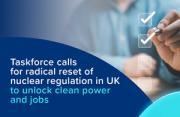
Nuclear Regulatory Taskforce publishes final report and calls for radical reset of overly complex nuclear regulatory system. An overly complex nuclear regulatory system has contributed to the "relative decline" of the UK's ability to deliver faster and cheaper nuclear projects.
Funding approved for Wick Harbour port consultant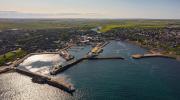
A specialist ports consultant has been appointed to develop a long-term strategic plan for Wick Harbour Authority (WHA) in Caithness. WHA has secured £47,775 from Highlands and Islands Enterprise (HIE) and the Nuclear Restoration Services, NRS Dounreay towards the cost of the services.
Fallon Campbell From Melvich Near Thurso Named As Apprentice of the Year At Awards In London
Rising star from North Scotland honoured at event to celebrate brightest and best in industry. An electrical apprentice from North Scotland is celebrating after being recognised for her contribution to industry at the 13th annual Engineering Construction Industry ECI Training and Development Awards in London.
The NDA Group Graduate Programme: more than a job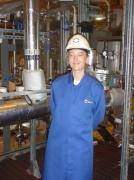
The NDA group graduate scheme offers far more than just a stepping stone into the nuclear industry; it's a chance to grow professionally, explore new places, and become part of a supportive community. Nuala Ledward, Assurance and Performance Graduate, shares how her secondment to Dounreay brought these benefits to life.
UKAEA develops 3D printing for fusion components
At its recently opened Central Support Facility (CSF), UKAEA has commissioned an electron beam additive manufacturing machine that can be used to incorporate tungsten into components, alongside a selective laser manufacturing machine. Fusion can play a key role in a global low carbon energy future.Advancing Fusion Remote Maintenance: Industry Collaboration Driving Innovation
As part of the Fusion Futures (FF) programme, UKAEA's Remote Applications in Challenging Environments (RACE) has partnered with industry leaders to develop two groundbreaking technologies for remote maintenance in fusion energy engineering. Thanks to FF funding, industry has taken the lead in maturing UKAEA technology concepts—delivering real-world solutions that enhance operational autonomy and reduce maintenance burdens in extreme environments.
